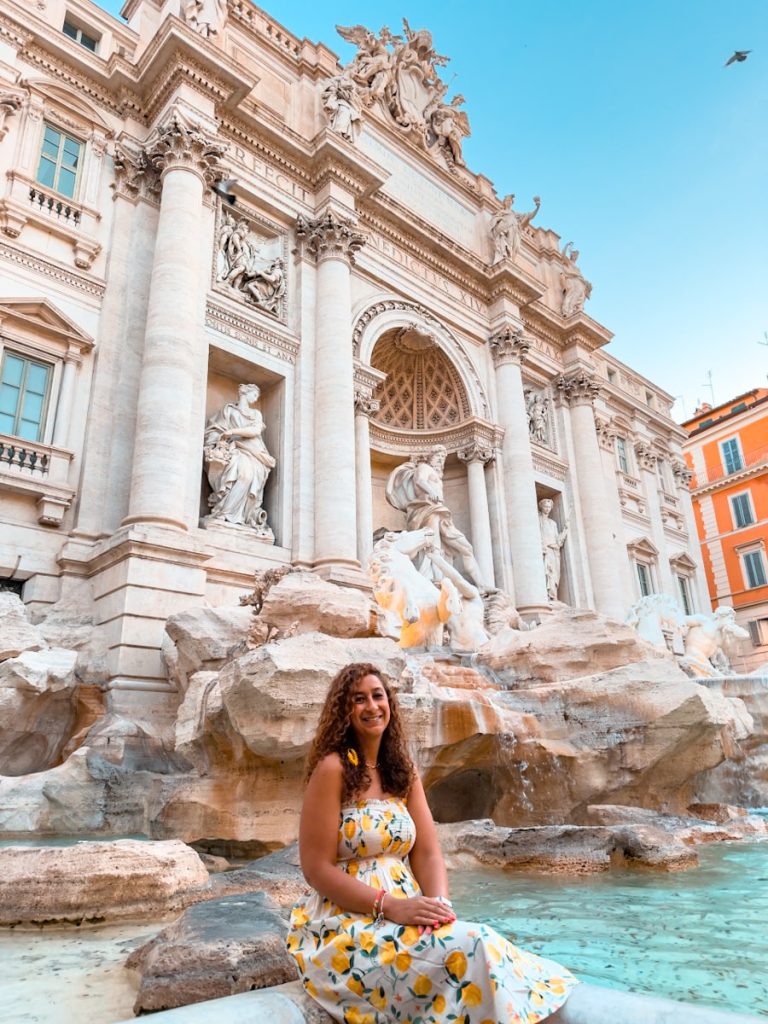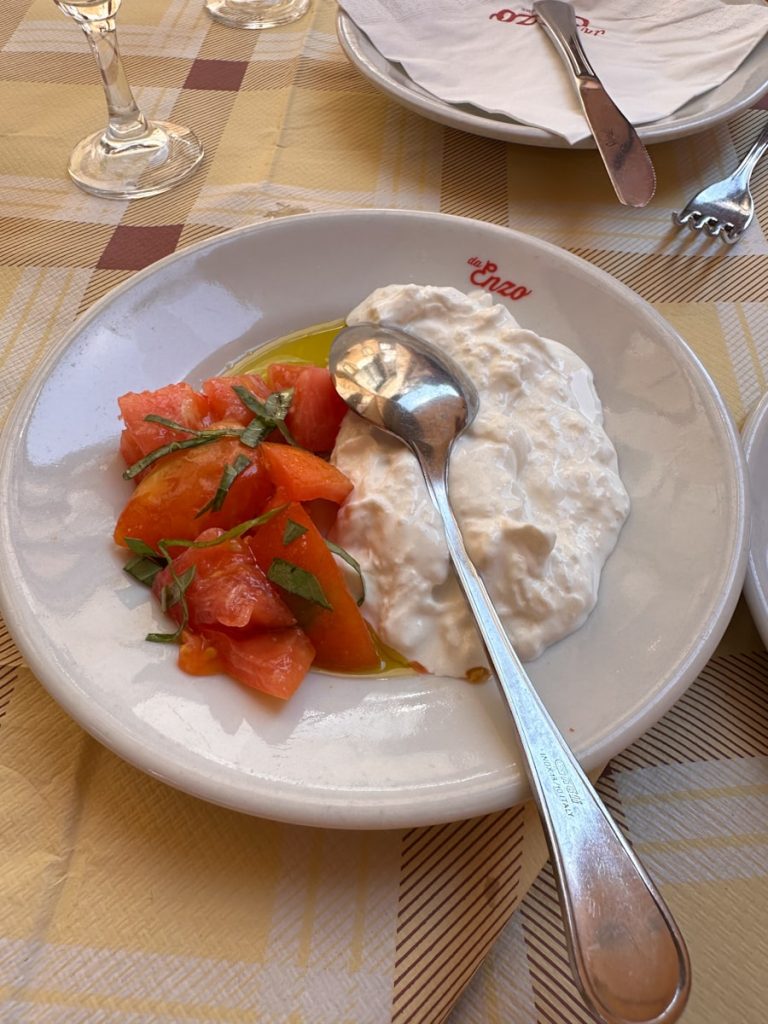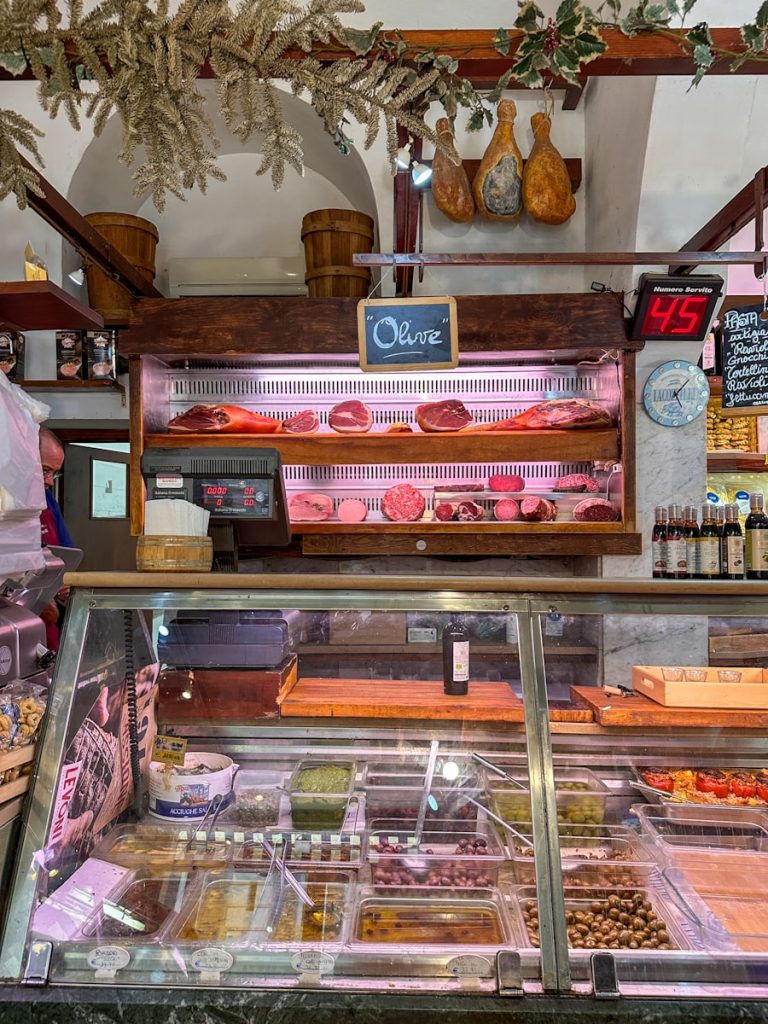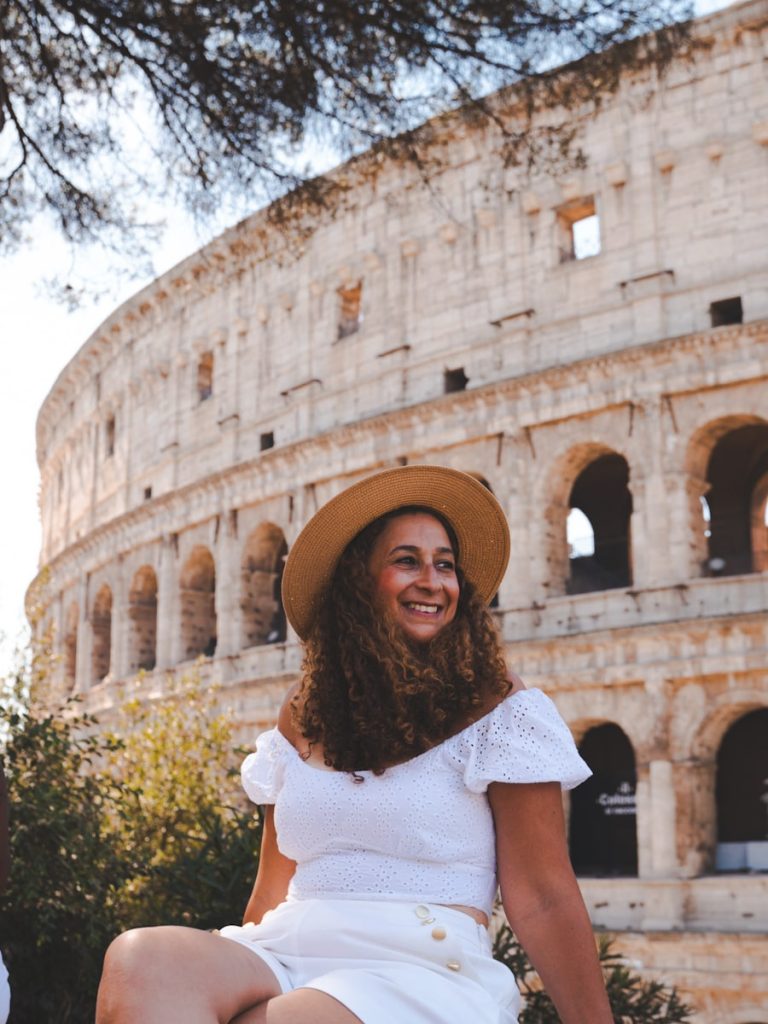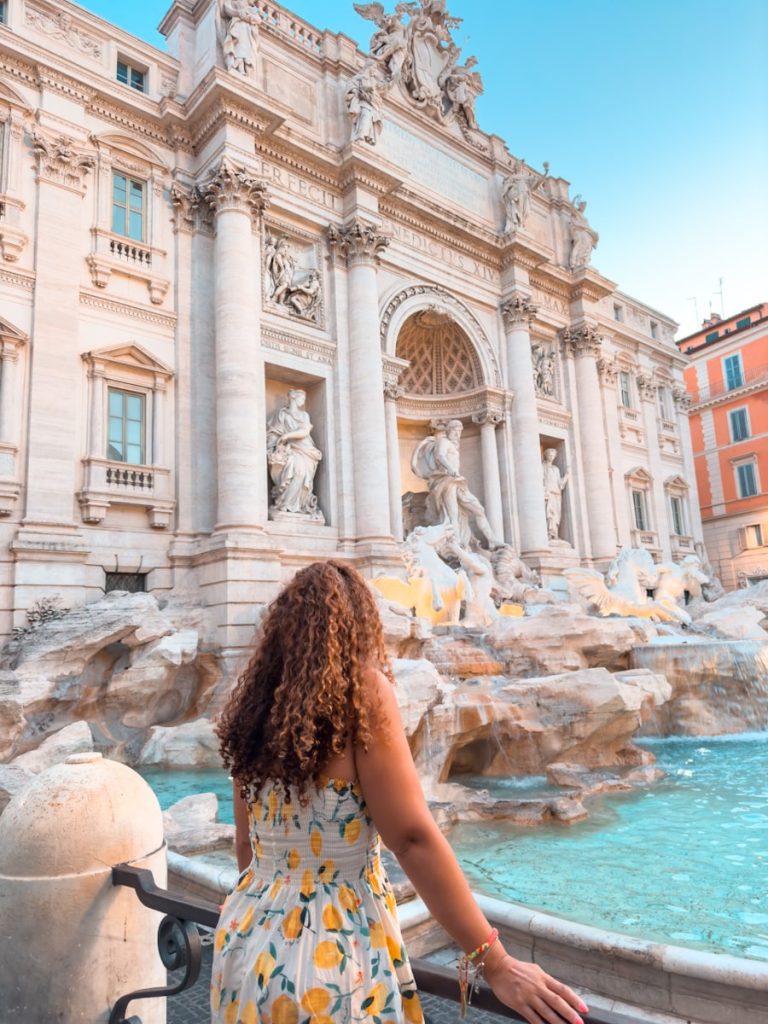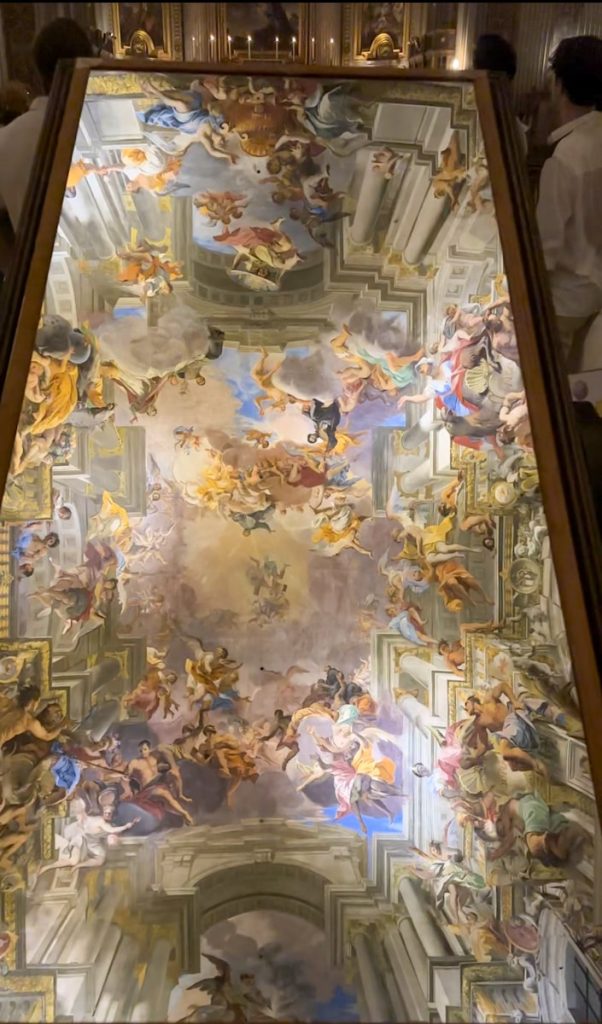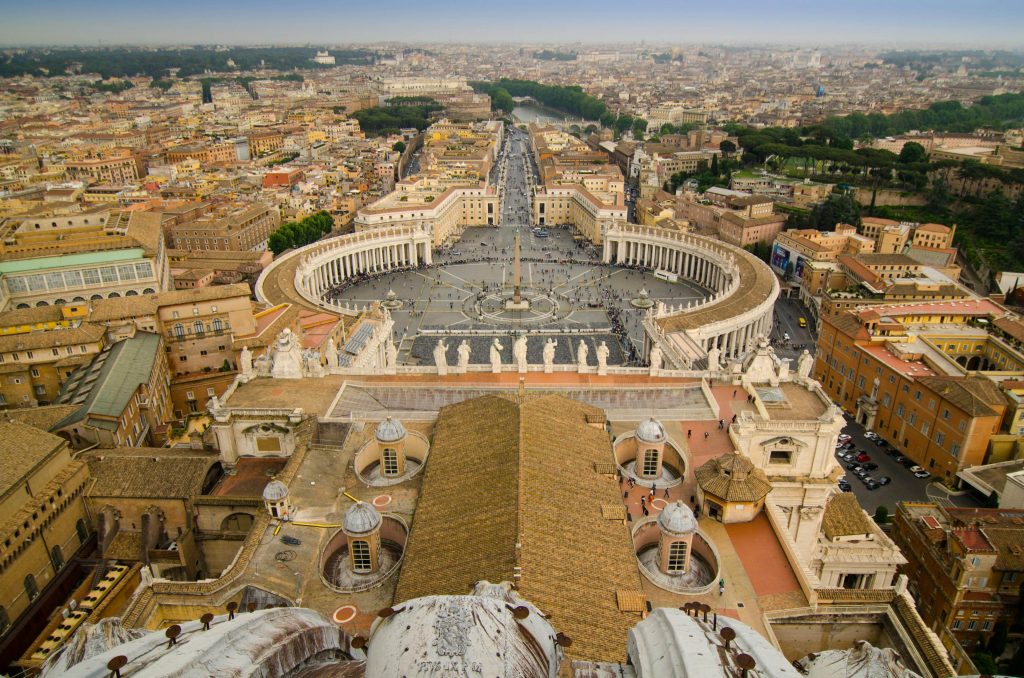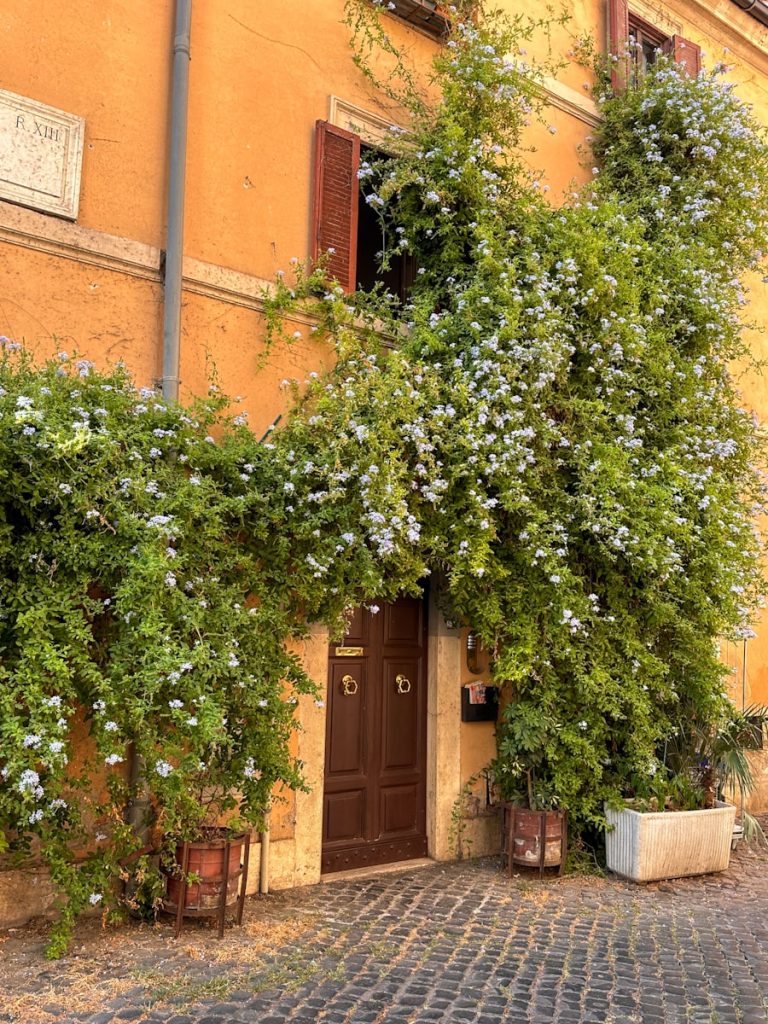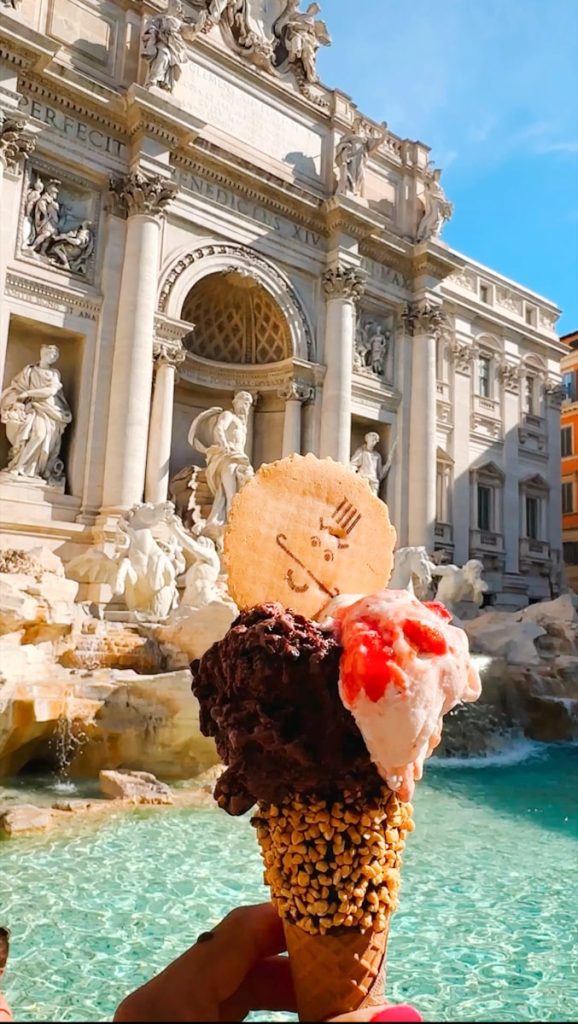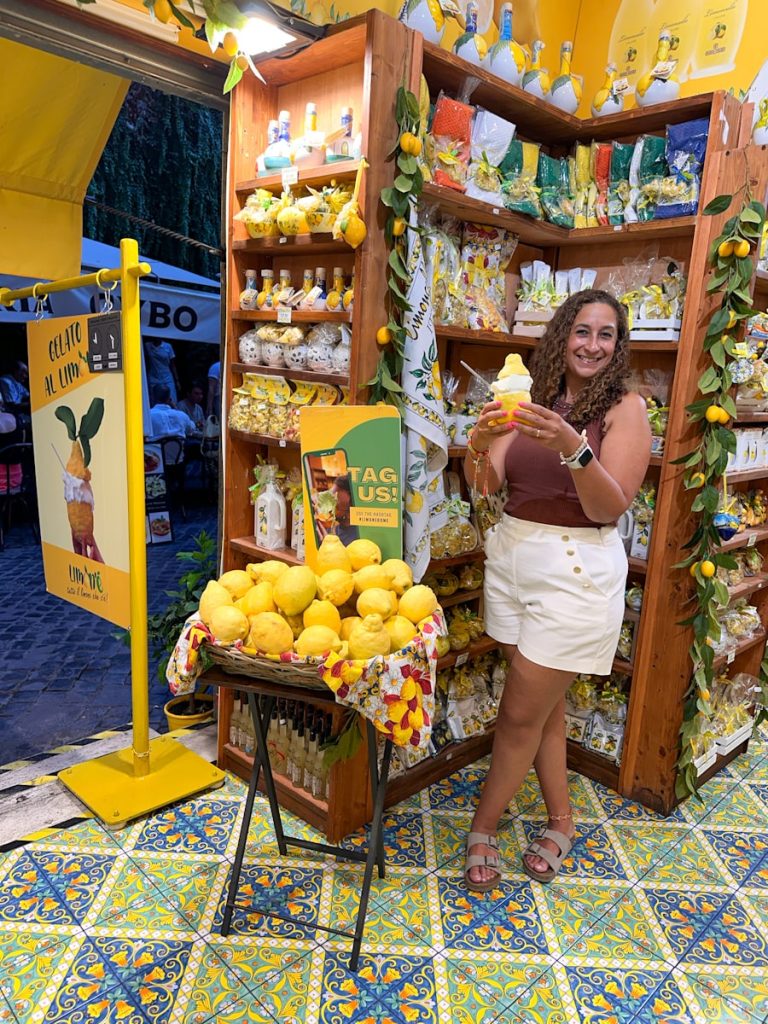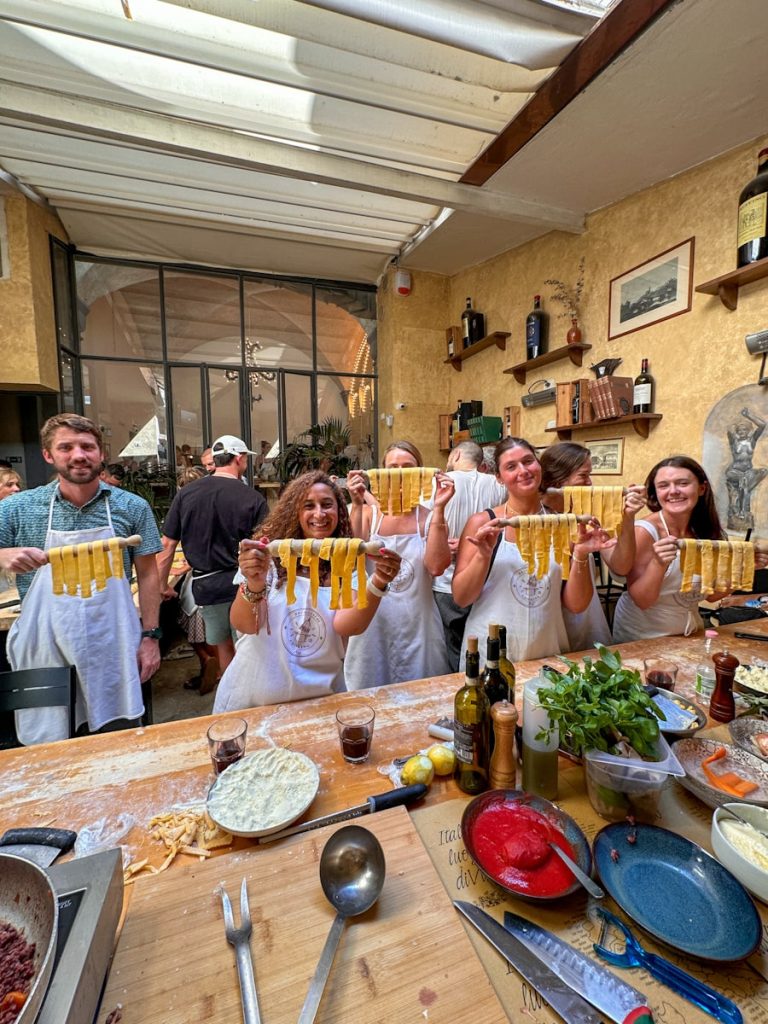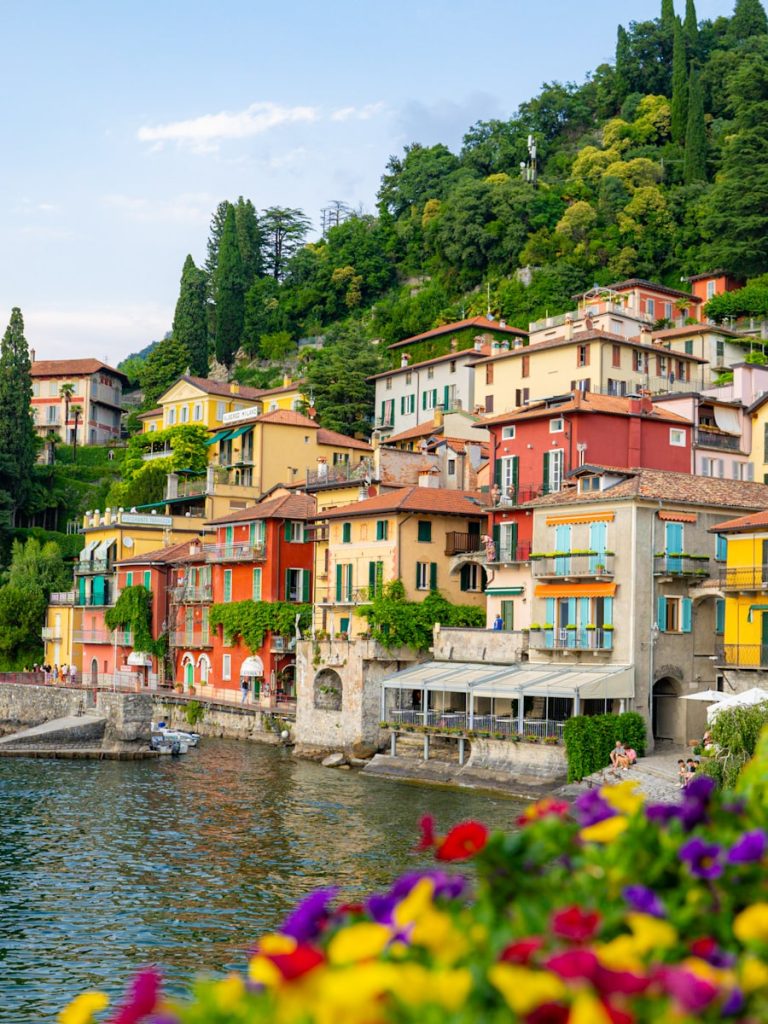Are you planning a trip to Rome and wondering what the best things to do in the Eternal City are? From awe-inspiring ancient ruins to buzzing piazzas, Rome truly has it all.
Even after all the photos and history books, Rome still manages to surprise you at every turn. After spending several days exploring, I completely fell in love with its perfect mix of history, energy, and undeniable charm.
In this post, I’ll walk you through the absolute best things to do in Rome — from must-see landmarks to hidden gems, local food spots, and smart tips to beat the crowds (because yes, there will be crowds). Whether it’s your first time or a return visit, this guide will help you plan an unforgettable Roman adventure.
Note! This post may contain affiliate links, meaning I get a commission if you decide to purchase something through the links, at no additional cost to you. Your support helps me continue doing what I love. Thank you!
16 Best Things to Do in Rome for First-Time Visitors
1. Go On a Food Walking Tour
If there’s one thing I wish I’d done differently in Rome, it’s this: booked a food and wine tour on my first day. Rome is packed with amazing food, but also tons of tourist traps.
I made the mistake of saving the tour for my last night. While it ended up being one of the best things I did in Rome, I seriously regret not doing it earlier! A Trastevere food tour doesn’t just introduce you to authentic Roman dishes — it teaches you how to eat like a local, spot the real gems, and avoid wasting your time (and money) on mediocre meals.
Put your Google Maps away and let a local guide you through one of Rome’s most charming neighborhoods — Trastevere. On this food tour, you’ll get a crash course in Roman cuisine, local food culture, and where to actually find the good stuff. Think of it as your culinary orientation to Rome — and trust me, it’s worth it.
I booked this exact Trastevere Food & Wine Walking Tour through Get your Guide and was blown away by the quality and quantity of food.
We visited 7 local spots, tasted 13 amazing dishes, and enjoyed endless wine and Prosecco. Highlights included skipping the line at Da Enzo al 29, exploring a 150-year-old wine cellar, and learning the secrets behind supplì, porchetta, and authentic gelato.
We also had fresh pasta, burrata, arancini, carpaccio, and pizza marinara, every bite was delicious. The wine pairings were perfect, an absolute must for food lovers in Rome!
2. Visit the Colosseum
If there’s one thing you absolutely can’t miss in Rome, it’s the Colosseum. I know, I know—it’s on every single Rome itinerary. But for good reason!
This iconic amphitheater is not only one of the Seven New Wonders of the World, it’s also the most visited tourist attraction in all of Italy. In 2023 alone, over 12 million visitors walked through its ancient gates—that’s roughly 33,000 people a day! 😳
It’s crazy to think that this massive arena was built nearly 2,000 years ago to host up to 80,000 spectators, and it still holds the title of the largest ancient amphitheater ever built.
But before you go, there are a few things you really need to know—especially when it comes to booking your tickets. Here’s something most travel guides won’t tell you: getting tickets to the Colosseum isn’t always easy.
There are a few different ways to visit the Colosseum, depending on your time, budget, and interest level. Here’s a quick breakdown:
1. Standard Admission – Entry tickets only
Includes access to the Colosseum, Roman Forum, and Palatine Hill.
This is your classic, no-frills ticket. Great if you’re on a budget or prefer to explore at your own pace. But don’t wait to book—these often sell out in advance.
2. Guided Tour with Priority Access
Includes skip-the-line access + professional local guide.
Perfect if you want to learn more about Roman history and avoid the long entry queues. You’ll visit all three landmarks with someone who knows their stuff—and trust me, having a guide adds so much context. Highly recommended if you’re visiting Rome for the first time or short on time.
3. Colosseum Underground & Arena Floor Tour
Includes access to exclusive areas not open to regular ticket holders.
Want to walk where gladiators once stood? This tour gives you access to the underground tunnels and the arena floor—areas where animals and fighters waited before their battles. It’s a unique, behind-the-scenes experience that’s totally worth it if you’re into history or architecture.
3. Toss a coin in Trevi Fountain
One of the must-do experiences when in Rome is visiting the Trevi Fountain. It’s so massive and iconic that no photo can truly do it justice—trust me. It was one of those pinch me moments!
The tradition is to toss a coin using your right hand over your left shoulder. This is said to guarantee your return to Rome.
To make the most of your visit to the Trevi Fountain, try to arrive early in the morning or later in the evening, as it gets really busy during the day. That said, the good news is—you can still get beautiful photos even when it’s crowded! Just find the right angles and be a little patient.
Top tip: Be aware of pickpockets!
4. Take a Vespa Tour
If you’re planning a trip to Rome, one experience I highly recommend taking a Vespa tour. It was easily one of the most memorable parts of my entire visit.
I booked this tour, and from start to finish, it was an incredible way to explore the city. You can either ride your own Vespa or choose to travel with an instructor if you don’t have prior experience. I personally opted for the passenger experience and rode with my own private driver.
My guide, Francesco, was not only knowledgeable about the history and architecture of Rome, but he also made the tour so much fun. He shared fascinating insights, pointed out hidden gems, and even sang along the way, which made the ride feel even more special and immersive.
What I loved most about the Vespa tour is how efficient it was. Rome is a large city, and if you’re short on time, it can be difficult to cover all the major sights on foot. The Vespa allowed us to zip through different neighborhoods, stop at key landmarks, and take in both well-known highlights and off-the-beaten-path spots.
5. Visit The Magic Mirror at Chiesa di Sant’Ignazio di Loyola
If you’re looking to explore one of Rome’s most beautiful churches, plan a visit to Chiesa di Sant’Ignazio di Loyola. We went around in the evening around 9:30 PM in July and walked straight in. The church is open until 11:30 PM, making it the perfect spot for a peaceful and atmospheric late-night visit.
Inside the church, you’ll find a mirror installation that offers a unique way to admire the stunning ceiling fresco without craning your neck. For just 1 euro, you can look into the mirror and take a perfectly framed photo of the ceiling above.
The real magic lies in the artwork. The ceiling features an incredible Baroque fresco painted by Andrea Pozzo in the 17th century. What makes it so extraordinary is that it creates the illusion of a grand dome, even though the ceiling is actually flat. This trompe-l’œil technique is a masterpiece of perspective and one of the most breathtaking optical illusions in Rome.
6. Visit the Vatican
If you’re heading to Rome, visiting the Vatican is an absolute must. Between the Vatican Museums, St. Peter’s Basilica, and the Sistine Chapel, there’s so much beauty and history packed into one tiny country!
Waiting in line to get tickets can take hours and hours, especially during peak season. Make sure to Book your tickets online in advance or go for a guided tour with skip-the-line access. It’ll save you time (and a whole lot of frustration).
Try to visit early in the morning or later in the day when it’s a bit quieter. Midday is when the crowds really pour in, especially inside the Sistine Chapel. Also good to know—Sundays are usually closed, unless it’s the last Sunday of the month (when entry is free, but super crowded).
Take your time exploring St. Peter’s Square, step inside the Basilica, and wander through the stunning halls of the Vatican Museums.
7. Climb the top of St. Peter’s Basilica
St. Peter’s Basilica is one of the most important churches in the world—and also one of the biggest! Inside, you’ll see amazing artwork and beautiful details everywhere you look.
Make sure to climb to the top of the dome. The walk up is a bit tiring, but the views of Rome from the top are incredible. You can see all of St. Peter’s Square and the city all around you. It’s also a great spot for photos!
📌 Tip: You’ll need to cover your shoulders and knees to go inside, so dress accordingly.
8. Eat the Best Tiramisu at Mr. 100 Tiramisu
Mr. 100 Tiramisu is a must-visit for any tiramisu lover in Rome. They offer an unbelievable 100 different flavors—from the traditional classic to pistachio, Nutella, Baileys, and so many more. It’s basically heaven for dessert lovers!
The vibe is just as sweet as the treats. With outdoor seating, you can relax with your tiramisu while soaking up the Roman streetscape.
They also serve savory options like cheese and salami boards, making it the perfect stop whether you’re craving sweet or salty.
9. Wander Around Trastevere Neighbourhood
Trastevere is one of Rome’s most charming and picturesque neighborhoods, full of cobblestone streets, colorful buildings, and a warm, lively atmosphere. It’s the perfect place to embrace “la dolce far niente”—the sweet joy of doing nothing and simply soaking in the moment.
As the sun sets, the neighborhood comes alive with a cozy, romantic vibe. Lanterns light up the narrow streets, and the air fills with laughter, music, and the tempting aroma of delicious food. Trastevere is a top spot for dining and evening strolls, where locals and visitors mix in a relaxed, friendly buzz.
10. Enjoy The Lively Atmosphere at Piazza Novana
One of Rome’s most beautiful and lively squares, Piazza Navona is built on the ruins of an ancient Roman stadium. Today, it’s a gathering place filled with fountains, artists, musicians, and people-watching opportunities galore.
The centerpiece is Bernini’s Fountain of the Four Rivers, a dramatic Baroque masterpiece representing the Nile, Ganges, Danube, and Rio de la Plata.
Visit around sunset when street performers appear and the square takes on a magical glow. Grab a gelato and sit on one of the benches to soak in the atmosphere.
11. Visit Palatine Hill and Roman Forum
Step into ancient Rome by visiting Palatine Hill, the very place where, according to legend, Romulus founded the city in 753 BC. Today, it’s a peaceful escape from the crowds, with shaded paths, wildflowers, and crumbling ruins that whisper stories from the past.
As you wander among the remnants of imperial palaces and old gardens, you’ll also be treated to sweeping views of the Roman Forum below—a stunning glimpse into the city’s former glory.
From here, make your way down into the Forum itself, once the bustling heart of political and social life in ancient Rome. You’ll pass by the remains of temples, arches, and basilicas that once stood at the core of the Roman Empire.
For the best experience, start early in the morning when it’s cooler and less crowded. Grab a combo ticket that includes the Colosseum, Palatine Hill, and Roman Forum—it’s valid for 24 hours and lets you explore each site at your own pace. It’s one of the most immersive ways to truly connect with Rome’s incredible history.
12. Taste The Best Gelato
No visit to Rome is complete without tasting gelato—especially by the stunning Trevi Fountain. Grab a scoop from nearby shops like Gelateria Valentino or Gelato at Trevi, both known for their authentic, creamy flavours. For the best experience, enjoy your gelato early in the morning or late at night when the fountain is beautifully lit and less crowded.
13. Taste Sorbet and Limoncello at Limone
If you’re a lemon lover, Limone near Piazza Navona is pure heaven. You can taste refreshing lemon sorbet served inside an actual lemon shell—talk about a feast for the eyes and taste buds! The whole place is bursting with lemon flavor, from ceiling to floor. Don’t miss their free Limoncello tasting, a perfect way to savor this classic Italian lemon liqueur.
📍 Find them at Via di Tor Millina 8, just steps from Piazza Navona.
14. Take A Pasta Cooking Class
There’s really nothing more authentic than rolling up your sleeves in a pasta cooking class — feeling the dough between your fingers, learning traditional techniques straight from local chefs, and savoring the freshest, homemade pasta right after. It’s such a hands-on way to connect with the culture and flavors of Italy.
highly recommend booking a cooking class in Rome — it’s such a fantastic way to dive into authentic Italian cuisine. And hey, if you’re also heading to Florence, I actually have a full blog post all about the best cooking class there.
15. Sip On Spritz On Oro Bistrot Rooftop Bar
Sip on a refreshing spritz while soaking in panoramic views of Rome’s skyline from this chic rooftop bar. It’s the perfect spot to unwind in style, especially at sunset when the city glows in golden light. It’s a popular place, so be sure to book a reservation in advance to snag the best seats!
16. Feel Like Emily in Paris — at Rome’s Iconic Spanish Steps
One of Rome’s most iconic spots! Climb the 135 steps for a beautiful view over Piazza di Spagna and enjoy the lively atmosphere. It’s a popular place to sit, relax, and people-watch — especially at sunset. Don’t forget to snap a photo with the Fontana della Barcaccia at the base!
How to get to Rome
Rome is easily accessible with two major airports:
✈️ Fiumicino Airport (FCO) – the main international hub, about 45 minutes from the city center.
✈️ Ciampino Airport (CIA) – smaller and mostly used by budget airlines like Ryanair.
From either airport, you can reach the city by train, taxi, ride-share, or a pre-booked transfer.
I personally booked a bus transfer via GetYourGuide from FCO to Roma Termini, and it was super easy and stress-free — especially helpful if you’re traveling with a lot of luggage. The meeting point was easy to find, and the ride was smooth.
Another great option is the Leonardo Express train, which takes you from FCO to Termini Station in just 32 minutes.
Getting Around Rome
Rome is fairly walkable, especially in the historic center, but public transport is a great way to cover more ground.
🚇 Metro:
Rome has a small but efficient subway system. While it doesn’t run directly through much of the historic center, it’s still useful for getting across the city. A single ticket costs just €1.50 and is valid for 100 minutes on buses, trams, and the metro.
🚌 Buses:
Buses are slower due to traffic but can take you to places the metro doesn’t reach. You can buy tickets at metro stations, Tabacchi shops (marked with a “T”), or via mobile apps like myCicero or ATAC Roma.
🎟️ Rome Tourist Card (or Roma Pass):
If you plan to visit multiple attractions, consider getting the Rome Tourist Card or Roma Pass. It includes unlimited public transport for 48 or 72 hours, skip-the-line access to top sights like the Colosseum, and discounted entry to museums and cultural sites — a great value if you’re sightseeing!
Where to Stay in Rome
I highly recommend staying as central as possible — it’ll save you tons of time (and energy!) walking or commuting between attractions. Areas like Piazza Navona, Trastevere, Campo de’ Fiori, and Montiere offer that perfect mix of charm, convenience, and access to Rome’s iconic sights. Here are some popular places to stay in Rome.
📍 Trevi neighbourhood
The Trevi area is perfect for first-time visitors — central, walkable, and just steps from Rome’s top sights, shops, and restaurants.
Hotel Fontana right in front of the Trevi Fountain and a 5-minute walk from Barberini Metro Station on line A, just 2 stops from Termini Train Station. The Pantheon is 500 metres away.
Relais Fontana Di Trevi Hotel Relais Fontana di Trevi is not only close to 1 of Rome’s most famous fountains. The Spanish Steps and the Pantheon are less than 10 minutes away on foot. I personally stayed here and loved everything about the hotel and location.
📍 Piazza Navona
is perfect for travelers who want to be surrounded by Baroque architecture, street artists, and a festive ambiance. Staying here allows you to easily explore Rome’s historical sites on foot and immerse yourself in the city’s art and culture.
Nikis Collection Navona central base with Campo de’ Fiori a 3-minute walk away, Largo di Torre Argentina 400 metres nearby, and Piazza Navona 500 metres from the property.
📍 Campo de’ Fiori
For those who want to be in the heart of the action, Campo de’ Fiori offers a bustling market during the day and transforms into a lively nightlife spot in the evenings. Staying here puts you within walking distance of many key landmarks.
Karma House Deluxe Navona central position with Campo de’ Fiori a 1-minute walk away, Piazza Navona 500 metres nearby, and the Pantheon within a 9-minute walk
📍 Vatican City
If you prefer a quieter and more residential area while still being close to the Vatican and Castel Sant’Angelo, Prati could be ideal. This neighborhood offers a mix of upscale boutiques, great restaurants, and a more serene environment.
Residenza Palline by Hili is situated in Rome city centre, offering proximity to key attractions. The Vatican is a 5-minute walk away, while St Peter’s Square lies 300 metres nearby. The Vatican Museums are less than 1 km from the property.
📍 Trastevere
Imagine cobblestone streets lined with charming cafes and trattorias, lively piazzas filled with locals and tourists alike, and a vibrant atmosphere day and night. Trastevere is known for its bohemian vibe, historic architecture, and excellent dining options.
📍 Monti
If you prefer a trendy and artsy neighborhood, Monti is an excellent choice. This area boasts boutique shops, cozy wine bars, and a more local feel while still being close to major attractions like the Colosseum and Roman Forum.
Where to eat in Rome
PASTA
Da Enzo al 29
Rione 13
Cucina del Teatro
Felice a Testaccio
Cantina e Cucina
Hostaria Da Pietro
Osteria da Fortunata
Taverna Trilussa
Osteria Nannarella
Ristorante La Villetta dal 1940
PIZZA
Piccolo Buco
180 grammi Pizzeria
Mama Eat Roma
Pizzeria Da Baffetto
GELATO
Gelato in Trevi
Giolitti
Gelateria La Romana
Come il Latte
Venchi
Fatamorgana Gelato
TIRAMISU
Two Sizes
Mr. 100 Tiramisù
Best Time to Visit Rome
☀️ Spring (April–June) and 🍂 Autumn (September–October) are ideal — warm weather, fewer crowds, and beautiful light for photos.
🔥 Summer (July–August) can be hot and crowded, but it’s also when outdoor events and late-night vibes peak.
❄️ Winter (November–February) is quiet and budget-friendly, with festive charm around Christmas and New Year.
Conclusion
I hope this guide inspired you to visit Rome and helped you plan an unforgettable trip to the Eternal City. Get ready to fall in love with every cobblestone corner!
You may also like these posts!
Venice 3 days Itinerary
15 things to do in Venice
Best Pasta Cooking Class in Florence
3 Perfect Days Itinerary In Florence
15 Best, Secret & Fun things to do in Florence
4 Best Luxury Boat Tours Lake Como
